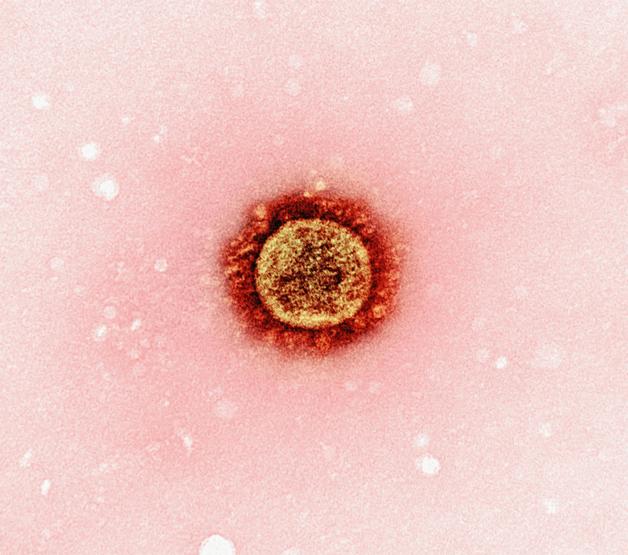You are staring at a number on a lab report and wondering what it means for the tiny future you hope is growing. The beta hCG hormone rises early, often before you feel any different, and it quickly becomes the center of every conversation about timing, location, and progress. You want clarity, not guesswork. You want to know what a single number can tell you, when to repeat it, when to book an ultrasound, and when to act. Here is a calm, science based walkthrough that translates beta hCG hormone patterns into practical next steps, with clear red flags and reassurance where it is warranted.
Beta hCG hormone, a parent first look
One line takeaways
- A single positive test confirms that pregnancy hormone is present, the pattern over time decides what happens next.
- Expect a repeat blood test in 48 to 72 hours, early viable pregnancies usually show a substantial rise.
- Heavy bleeding, severe pain, fainting, or dizziness calls for urgent medical care, do not wait for numbers.
What one value can and cannot tell you
- What one value can tell you: pregnancy is detected, and with known dates you get a rough idea of timing.
- What one value cannot tell you: location, presence of a heartbeat, or whether the pregnancy will continue.
- Why serial tests matter: a sequence of results reveals whether the beta hCG hormone is rising, plateauing, or falling. That pattern guides care.
Common scenarios when parents see beta hCG hormone tests
- Positive home test followed by confirmation and early monitoring.
- Follow up after IVF to confirm implantation and assess early rise.
- Bleeding or pain early in pregnancy, to evaluate miscarriage or ectopic pregnancy risk.
- Monitoring after miscarriage, termination, or evacuation of molar tissue.
- Oncology settings when hCG producing tumors are suspected or treated.
What is the beta hCG hormone, structure, variants and sources
Subunits and why the beta piece matters
Human chorionic gonadotropin has two protein parts, alpha and beta. The alpha part looks like other pituitary hormones, LH, FSH, and TSH, while the beta subunit is unique to hCG. Assays focus on the beta unit to avoid cross reactivity with LH FSH TSH alpha subunit, which keeps pregnancy tests specific.
Isoforms and clinical relevance
Your lab number is not always one simple molecule. Several forms circulate in blood and appear in urine:
- Intact hCG, the common dimer measured by most pregnancy tests.
- Free beta hCG, the unpaired beta unit, often higher in certain tumors.
- hCG isoforms such as hyperglycosylated hCG, a highly decorated early form linked to implantation success and sometimes to abnormal trophoblast activity.
- Nicked fragments and core fragments, especially in urine.
- Macro hCG, large complexes that can cause persistent low level positives.
Why this matters for you: different assays recognize different mixtures of these forms, so numbers may vary between labs or between serum and urine. Following the beta hCG hormone trend on the same platform reduces confusion.
Where beta hCG hormone is produced
- Syncytiotrophoblast cells of the developing placenta.
- Trophoblastic tumors including choriocarcinoma.
- Germ cell tumors in ovaries and testes.
- Small pituitary production in peri or postmenopausal women.
Physiology and kinetics of the beta hCG hormone across time
Detection windows and early rise
- Blood tests can detect very low levels as early as about 10 days after conception. Urine trails by a few days.
- Early rise pattern, in many viable pregnancies the beta hCG hormone doubles over 48 to 72 hours, sometimes it rises more slowly yet remains healthy. Clinicians often focus on the minimum acceptable doubling time based on the starting value.
Peak, plateau, and decline
- Peaks usually appear around 8 to 11 weeks from the last menstrual period, then a decline and a plateau follow for the rest of pregnancy.
- After a birth or pregnancy loss, levels fall over days to weeks. Persistent detection after a pregnancy event needs evaluation.
Factors that influence levels
- More than one embryo tends to produce higher peaks in multiple gestation.
- Age, body weight, smoking, alcohol, stress, and thyroid or ovarian conditions may shape measured concentrations.
- Recent fertility triggers that contain hCG can cause transient positives.
- Assay behavior and isoform recognition affect reported numbers.
Laboratory testing for the beta hCG hormone, methods, units, and pitfalls
Qualitative versus quantitative, and sample types
- Home tests are qualitative urine hCG, they give a yes or no answer for screening.
- Blood tests are quantitative serum beta hCG, they provide an exact value to follow over time.
Assay platforms, units, and reporting details
- Common laboratory methods include chemiluminescent immunoassay CLIA, sandwich immunoassay, and related technologies. Reports show reporting units mIU/mL.
- Look for the reference range by gestational age on the report, follow trends on the same platform when possible.
- Sensitivity is driven by the limit of detection, which differs by platform.
Interferences that can mislead
- The hook effect can make very high true concentrations appear falsely low, dilution and repeat testing usually fixes this.
- Heterophile antibody interference and rheumatoid factor can cause false positives.
- Biotin interference from high dose supplements can disrupt some assays.
- Preanalytical issues and sample handling and dilution errors can distort results.
Practical sample tips
- First morning urine concentrates hCG, helpful when testing very early.
- Serum is preferred when location or viability are in question.
- Always tell your clinician about recent hCG trigger shots from fertility care.
Interpreting the beta hCG hormone in early pregnancy
Typical ranges by weeks since last menstrual period
Approximate serum ranges, values vary by lab, and overlap is large:
- 3 weeks, 5 to 50 mIU/mL
- 4 weeks, 5 to 426 mIU/mL
- 5 weeks, 18 to 7,340 mIU/mL
- 6 weeks, 1,080 to 56,500 mIU/mL
- 7 to 8 weeks, 7,650 to 229,000 mIU/mL
- 9 to 12 weeks, 25,700 to 288,000 mIU/mL
The beta hCG hormone trend is the star, a single number is only a snapshot.
Serial testing, practical rules
- Check a baseline, repeat in 48 to 72 hours, then decide on further repeats based on the pattern.
- Substantial rise early usually leads to routine follow up and ultrasound at the right time.
- Slow rise, plateau, or fall calls for imaging and closer monitoring.
Ultrasound correlation and discriminatory zone
- The discriminatory zone is a serum hCG level, often 1,500 to 2,000 mIU/mL, above which a normal intrauterine pregnancy is usually visible with transvaginal ultrasound.
- Ultrasound findings to look for include the double decidual sign, avoidance of a pseudosac, and stepwise yolk sac visualization, fetal pole visualization, and fetal cardiac activity detection.
- Strong ultrasound correlation with serial beta hCG hormone values prevents misinterpretation.
Distinguishing common patterns
- Viable intrauterine pregnancy, rising beta hCG hormone with appropriate ultrasound milestones.
- Biochemical loss, a transient low level rise that falls back to negative without an ultrasound confirmed intrauterine pregnancy.
- Ectopic pregnancy, slow rise or plateau, and no intrauterine pregnancy seen when above the discriminatory zone.
Ectopic pregnancy and pregnancy of unknown location
How beta hCG hormone informs risk
A pregnancy of unknown location means the test is positive but nothing definitive appears on ultrasound yet. Serial beta hCG hormone measurements help sort a normal early pregnancy from an ectopic process. When numbers rise slowly or plateau, ectopic risk increases.
Algorithms for PUL management
- Start with a quantitative level at presentation, repeat in 48 hours, perform ultrasound when appropriate or as the level approaches the discriminatory zone.
- For pregnancy of unknown location PUL, expectant management may be reasonable if levels are low and falling. If ectopic is suspected and criteria are met, medical therapy or surgery may be needed.
Urgent escalation triggers
Call emergency care for severe abdominal pain, heavy bleeding, fainting, shoulder pain, or signs of shock. These symptoms outrank any number on the page.
Molar pregnancy and gestational trophoblastic disease
Recognizing with beta hCG hormone patterns
Very high levels for gestational age may point to molar pregnancy, especially a complete mole. Ultrasound can show a snowstorm pattern on ultrasound without a fetus in a complete mole.
Post evacuation surveillance
After evacuation, weekly measurements continue until undetectable, then monthly checks for a period chosen by your specialist. A plateau or rise can suggest gestational trophoblastic disease GTD and triggers oncology input.
Monitoring treatment response
Falling to undetectable is a good sign. A new rise after an initial fall suggests persistent disease and further therapy.
Beta hCG hormone as a tumor marker outside pregnancy
Germ cell tumors and oncology uses
Some tumors use hCG as a growth signature. The beta hCG hormone is a tumor marker for germ cell tumors and supports staging, treatment monitoring, and recurrence detection in testicular and ovarian settings.
Non pregnancy causes and false positives
- Certain non gestational cancers can secrete hCG or subunits.
- Pituitary sources can cause persistent low level positives in peri or postmenopausal women.
- Cross checks, alternate assays, urine testing, and imaging help confirm the source and track post treatment hCG normalization.
Special scenarios, ART, miscarriage, menopause, exogenous hCG
IVF and assisted reproduction
- The beta hCG hormone is used as a trigger for ovulation, which can persist in blood for days. Clinics provide a specific test day after transfer to avoid misreading injected hCG as pregnancy derived hCG.
- A vanishing twin can create an initial high value that then declines, which complicates interpretation.
After miscarriage, abortion, or delivery
The beta hCG hormone declines over days to weeks. If it lingers, clinicians consider retained tissue or rare persistent trophoblastic disease.
Peri or postmenopausal low level positives
Pituitary production can create small detectable amounts, a situation that sometimes needs suppression testing and imaging to confirm the source.
Prenatal screening use in the first trimester
Down syndrome screening and combined testing
First trimester screening uses maternal serum markers and ultrasound. Elevated hCG when combined with other measures contributes to risk estimates for trisomy 21. This is not a diagnosis, it is a screening step that can inform genetic counseling and follow up testing.
Pathologies and symptoms linked to abnormal beta hCG hormone levels
Hyperemesis gravidarum and higher levels
Severe persistent nausea and vomiting may be associated with higher beta hCG hormone levels. Treatment focuses on hydration, nutrition, and symptom control.
Ectopic pregnancy and slow rising levels
A slower than expected rise can signal ectopic implantation. Prompt imaging and serial testing shorten time to a safe plan.
Pitfalls, interferences, and how to confirm unexpected results
Hook effect and dilution protocols
If very high clinical suspicion clashes with a surprisingly low beta hCG hormone value, ask about the hook effect. Diluting the sample and re running often reveals the true high concentration.
Heterophile antibodies, biotin, and cross reactivity
- Suspect interference when numbers do not match ultrasound findings. Confirm by repeating on a different platform, testing urine, or using blocking reagents.
- Tell your clinician about supplements. Avoid high dose biotin right before blood draws to reduce the risk of biotin interference.
Phantom positives and verification workflows
A practical confirmation set can include a new blood draw, an alternate platform, a paired urine test, and imaging correlation. This reduces the risk of pregnancy test false negatives and spares unnecessary interventions.
Interpreting results, numbers, thresholds, and clinical algorithms
Discriminatory zones and assay caveats
Local thresholds vary slightly by lab and ultrasound technique. Link decisions to both the beta hCG hormone trend and imaging, rather than a single cutoff.
Serial interpretation flow, what comes next
- Rising appropriately, continue follow up and plan ultrasound.
- Plateau or slow rise, move to urgent imaging and consider PUL and ectopic pathways.
- Declining, likely a biochemical loss or resolving pregnancy, manage according to symptoms and ultrasound.
Reference examples
- Example 1 viable, 60 to 120 mIU/mL in 48 hours. A later ultrasound confirms an intrauterine sac and heartbeat.
- Example 2 PUL or ectopic concern, 1,500 mIU/mL with no intrauterine sac, and little change at 48 hours. Escalate evaluation.
- Example 3 molar, very high level with abnormal placental tissue on imaging. Evacuate then monitor.
Counseling parents about beta hCG hormone results
Plain language scripts
- Positive home test, your home test detected pregnancy hormone. A blood test will give an exact number so we can watch how it changes.
- Rising result, this increase is reassuring. We will repeat the blood test in a couple of days and plan an ultrasound when timing is optimal.
- Plateauing or falling, this pattern means we need to investigate further. It could be an early loss or a pregnancy outside the uterus. We will do imaging and repeat testing to decide next steps.
Emotional support and practical next steps
Waiting is hard. Numbers need context and time to be reliable. Set a calendar for repeat tests, know which symptoms require urgent care, and ask for clear call back instructions. Consider keeping a simple log of dates, beta hCG hormone values, symptoms, and any fertility medications.
Patient instructions for home testing and lab visits
- Use first morning urine when testing very early.
- Share supplement use, especially biotin, and any fertility triggers with your care team.
- When possible, use the same laboratory platform to support accurate hCG trend monitoring and management decisions guided by hCG trends.
Laboratory and clinical protocols, best practices
Serial testing intervals and reporting standards
- Early pregnancy follow up, repeat the beta hCG hormone every 48 to 72 hours until a clear pattern emerges.
- GTD surveillance, weekly levels until negative, then monthly for a defined period.
- Reports should include assay name and context, the platform used, and whether the sample was diluted.
When to use serum quantitative versus urine testing
- Use serum for precise monitoring, PUL pathways, GTD follow up, and oncology.
- Use urine for initial screening at home or in early clinic checks.
Reflex testing and lab workflows for suspected interference
If results are unexpected, request dilution testing, repeat on an alternate method, or add urine testing. These steps minimize misclassification and support timely decisions.
Case examples and clinical vignettes
Case A, expected rise in a viable intrauterine pregnancy
Day 0, beta hCG hormone 60 mIU/mL. Day 2, 120 mIU/mL. Day 14, transvaginal ultrasound shows a sac, yolk sac, and fetal pole with a heartbeat. Plan routine prenatal care.
Case B, plateau and ectopic workup
Day 0, beta hCG hormone 1,500 mIU/mL with no intrauterine sac. Day 2, 1,600 mIU/mL. Mild pelvic pain. Plan urgent reevaluation and consider medical therapy or laparoscopy based on stability and imaging.
Case C, very high beta hCG hormone consistent with molar pregnancy
Heavy bleeding, markedly elevated level, abnormal placental tissue without a fetus on imaging. Plan evacuation and weekly surveillance, consider referral if levels plateau or rise.
Research and emerging uses of the beta hCG hormone
Hyperglycosylated hCG and early implantation biology
The hyperglycosylated hCG fraction supports early implantation and trophoblast invasion. Research teams are exploring whether this marker can predict early success or flag abnormal trophoblast behavior before traditional measures do.
Novel biomarker applications in oncology and reproductive medicine
Work is underway to refine variant specific assays, integrate panels with progesterone and ultrasound, and improve early stratification of PUL risk. The aim is safer triage, faster answers, and fewer unnecessary procedures.
Key takeaways
- The beta hCG hormone detects and monitors pregnancy and some tumors. Trends matter more than one isolated value.
- Early viable pregnancies often show a 48 to 72 hour rise, ultrasound milestones then confirm location and viability.
- Very high levels for dates suggest molar pregnancy or multiples. Persistent levels after evacuation require specialist follow up.
- Interferences exist, including heterophile antibodies, biotin, and the hook effect. Confirmation with alternate assays and urine can resolve mismatches.
- Ask for clear plans, when to repeat testing, when to schedule ultrasound, and which symptoms require urgent care. There are resources and professionals ready to support your decisions.
- For personalized tips and free child health questionnaires, you can download the application Heloa.
Questions Parents Ask
Can beta hCG levels tell me the baby’s sex?
Short answer: no — beta hCG is not a reliable way to learn fetal sex.
There are old myths and small studies suggesting subtle differences in average hCG between pregnancies carrying boys versus girls, but individual values overlap so widely that you cannot use a single level (or short series of levels) to predict sex. If knowing sex matters to you early, ultrasound around 18–20 weeks or non‑invasive prenatal testing (NIPT) give accurate answers; until then, try to focus on measures that track health and location of the pregnancy rather than hCG for sex‑prediction.
How long does it take for beta hCG to return to zero after a miscarriage, abortion, or delivery?
It varies. After a completed miscarriage or a medical/surgical abortion, levels usually fall steadily but may take days to several weeks to become undetectable. Typical time frames:
- After a very early miscarriage or medical abortion: often 1–3 weeks, but sometimes longer depending on the peak level.
- After surgical management or later losses: commonly 2–6 weeks.
- After delivery: levels frequently return to undetectable within 4–6 weeks, but individual variation occurs.
If levels plateau or rise instead of falling, or if you have heavy bleeding or pain, contact your care team — there are effective next steps available. Your clinician will advise the monitoring schedule and when to expect negativity based on your starting value and symptoms.
Can beta hCG predict the due date or guarantee pregnancy viability?
Beta hCG gives helpful early clues, but it cannot reliably predict the due date or guarantee an ongoing pregnancy on its own.
- Dating: ultrasound measurements (crown–rump length in the first trimester) provide the most accurate estimated due date. hCG can give a rough sense of timing only when menstrual dates are uncertain.
- Viability: serial hCG trends (rising appropriately over 48–72 hours) are reassuring, but the definitive signs of a viable pregnancy are ultrasound findings such as a visible fetal pole and cardiac activity. A single hCG number is a snapshot; the pattern over time plus imaging gives the clearer answer. If you feel anxious while waiting for tests, share those worries with your clinician — they can set a clear plan and timeframe so you know what to expect next.

Further reading :









